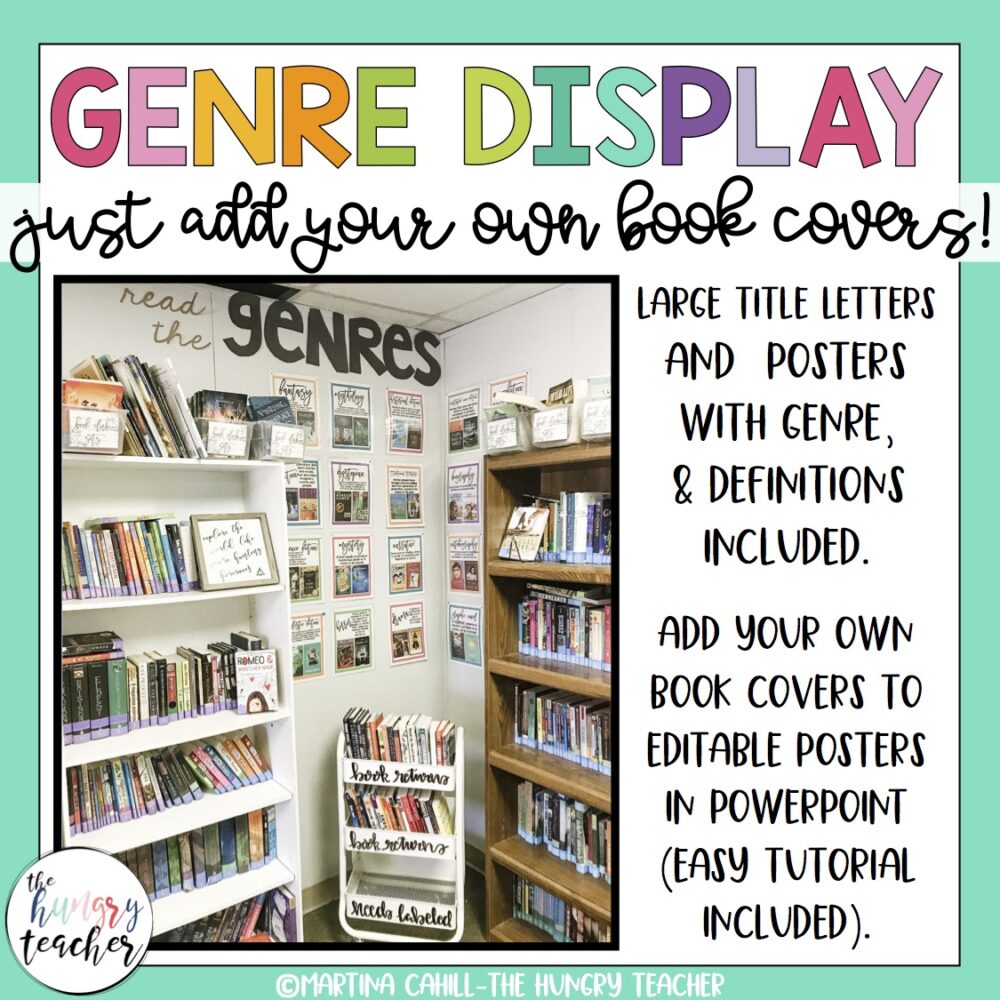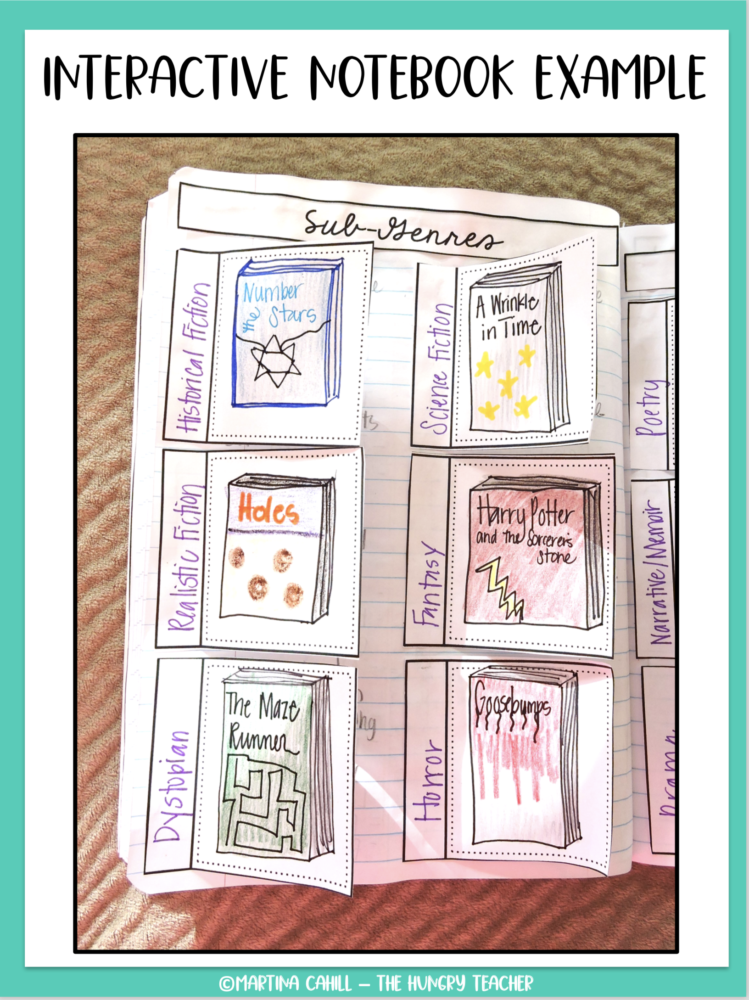hey friend!
I'm Martina.
I provide practical, time-saving strategies that actually work—so you can engage your students, teach effectively, and reclaim your time from the exhausting planning-grading cycle.
Browse Our ELA Resources
How to Teach Reading Genres in Upper Elementary and Middle School
How to Teach Reading Genres in Upper Elementary and Middle School
Teaching reading genres in grades 4-8 is more than just discussing fiction versus nonfiction. First, there are so many sub-genres to share with your students! Don’t just have students memorize terms. In addition, bring reading genres into your instruction in engaging ways. Get started and learn how to teach reading genres in your ELA classroom!
Let your students show what they know.
First, don’t assume your students know anything about genres. To begin, start early in the year with a pre-assessment. This ready-to-go assessment also asks students various questions about genres. For example, “What are the characteristics of a realistic fiction book?” or “What are the characteristics of an informational story/book?”
In addition, questions about differences between specific sub-genres are also on the pre-assessment. The answer keys are included!



Finally, students share an example of a book they read in a specific genre or sub-genre. For example, students may write down The Giver by Lois Lowry as a dystopian fiction piece. In addition, I am Malala could be shared as an example of an autobiography. This list includes fiction, non-fiction, autobiography, realistic fiction, science fiction, and more. Additional genres are included as well.
Overall, a pretest is a way to find out what your students know. Finally, after the closing lesson, students take a post-assessment to find out how much they learned!
Create a genre reading corner.

Another way to teach your students about reading genres is by exposing them to different books in your classroom library. First, set up a comfortable area in your classroom where students can read. Next, hang the reading genre posters in your classroom reading corner.
Genre posters include:
- dystopian
- mythology
- historical fiction
- poetry
- graphic novel
- drama
- narrative
- horror
- fantasy
- realistic fiction
- biography
- autobiography
- . . .and more
First, personalize the corner for your readers. Before you hang the posters, add student favorite book cover graphics to your genre posters and feature special student and teacher picks on your reading corner shelves to showcase reading genres. Finally, your students will have a place to explore books and learn about different genres while reading!
Use interactive notebooks.



Of course, I am a huge fan of interactive notebooks in the classroom. To begin, use this reading genres unit to help your students develop a deeper understanding of reading genres.
First, within the reading genres unit, you’ll also teach mini lessons. Next, your students will reflect and explore ideas in their ready-to-print interactive notebooks.
The reading genre unit includes the following 14 lessons:
- Pre-Assessment
- Using Prior Knowledge
- The Two Main Genres
- Informational/Non-Fiction Genre
- Fiction Genre
- Fiction and Non-Fiction Sub-Genre
- Why are Genres Important
- Reading Response One
- Format vs. Genre
- Using Familiar Books to Understand Genres
- Digging Deeper into Genres
- Reading Response Two
- Genre Culminating Activity
- Genre Post Assessment
Finally, all of the lessons follow the same format. This makes the unit easy to use for you and your students!
- Title
- Objectives
- Common Core Standards for 4th, 5th, 6th, 7th, and 8th grades
- Materials Needed
- Mini-Lesson
- Reader’s Workshop
- Closing
Overall, students find success with the reading genres unit because they know exactly what to expect with each lesson.
In addition, the format makes it easy for students learning from school or at-home. In addition, your students also use independent and collaborative practice in their reader’s workshop and with their interactive notebooks.
Finally, help your students understand reading genres with this engaging reading genres unit!
Want a sneak peek at teaching The Hungry Teacher way—with support, structure, and strategy?
When you join the waitlist for The Hungry Teacher’s Hub membership, you get three free classroom-ready resources: a theme unit, an expository writing unit, and a grammar unit introducing mentor sentences. Plus, you’ll get immediate access to a selection of exclusives from the Hub, including editable sub plans, pacing guides, and more.
No strings attached. Just resources you can use right now—and a heads-up when the Hub opens.
3 Free Middle School ELA Units—yours to keep!
JOIN THE WAITLIST + A FREE GIFT
Where to next, line leader?
Welcome to The Hungry Teacher! We create resources that are easy to use, practical, and get results. Teach with confidence—and make it home before dinner.
xo, the hungry teacher